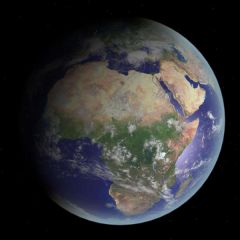Difference between revisions of "Earth spaceports in Orbiter2016"
Jump to navigation
Jump to search
(Mercury) |
(Infobox Earth.) |
||
| Line 1: | Line 1: | ||
| − | + | {| cellpadding="2" cellspacing="0" style="margin:25px 0 0 10px; border:3px solid lightsteelblue;width:250px; font-size:90%; font-family:'Arial','Helvetica'; float: right; clear: right;"Earth in Orbiter" | |
| − | + | !bgcolor="lightsteelblue" colspan="2" align="center" |Earth | |
| − | + | |- | |
| − | + | |colspan="2" align="center"|[[Image:EarthScrshot.jpg|240px]] | |
| − | + | |- | |
| − | + | |colspan="2" align="center"|'''Earth in Orbiter''' | |
| − | + | |- | |
| − | + | !bgcolor="lightsteelblue" colspan="2"|Designation | |
| − | + | |- | |
| − | + | |width="30%"|Name||align="right" width="30%"|Earth | |
| + | |- | ||
| + | |width="30%"|Reference body||align="right" width="30%"|Sun | ||
| + | |- | ||
| + | |width="30%"|Number of satellites||align="right" width="30%"|1 | ||
| + | |- | ||
| + | !bgcolor="lightsteelblue" colspan="2"|Physical parameters* | ||
| + | |- | ||
| + | |width="30%"|Mass||align="right" width="50%"|5.974×10<sup>24</sup> kg | ||
| + | |- | ||
| + | |width="30%"|Mean Radius||align="right" width="50%"|6.371×10<sup>6</sup> m | ||
| + | |- | ||
| + | |width="30%"|Gravitational moments||align="right" width="50%"|J<sub>2</sub>=1082.6269×10<sup>-6</sup><br>J<sub>3</sub>=-2.51×10<sup>-6</sup><br>J<sub>4</sub>=-1.6×10<sup>-6</sup><br>J<sub>5</sub>-0.15×10<sup>-6</sup> | ||
| + | |- | ||
| + | |width="30%"|Siderial day||align="right" width="30%"|8.616×10<sup>4</sup> s | ||
| + | |- | ||
| + | |width="30%"|Orbital period||align="right" width="30%"|3.159×10<sup>7</sup> s<br>(365.625 days) | ||
| + | |- | ||
| + | |width="30%"|Obliquity of ecliptic||align="right" width="30%"|23.44° | ||
| + | |- | ||
| + | |width="30%"|Atmosphere||align="right" width="30%"|Yes | ||
| + | |- | ||
| + | !bgcolor="lightsteelblue" colspan="2"|Atmosphere* | ||
| + | |- | ||
| + | |width="30%"|Atmosphere model||align="right" width="30%"|J71G | ||
| + | |- | ||
| + | |width="30%"|Surface Pressure||align="right" width="30%"|101.3 KPa | ||
| + | |- | ||
| + | |width="30%"|Surface Density||align="right" width="30%"|1.225 kg/m<sup>3</sup> | ||
| + | |- | ||
| + | |width="30%"|Specific gas constant||align="right" width="30%"|286.91 J/(K kg) | ||
| + | |- | ||
| + | |width="30%"|Specific heat ratio||align="right" width="30%"|1.40 | ||
| + | |- | ||
| + | !bgcolor="lightsteelblue" colspan="2"|Osculating elements (ecliptic frame)* | ||
| + | |- | ||
| + | |width="30%"|Semi-major axis||align="right" width="30%"|1.4971×10<sup>11</sup> m | ||
| + | |- | ||
| + | |width="30%"|Eccentricity||align="right" width="30%"|0.015958 | ||
| + | |- | ||
| + | |width="30%"|Inclination||align="right" width="30%"| 0° | ||
| + | |- | ||
| + | |width="30%"|Longitude of ascending node||align="right" width="30%"| 141.13° | ||
| + | |- | ||
| + | |width="30%"|Longitude of periapsis||align="right" width="30%"|103.41° | ||
| + | |- | ||
| + | |width="30%"|Mean Longitude||align="right" width="30%"| 260.75° | ||
| + | |- | ||
| + | !bgcolor="lightsteelblue" colspan="2"|Ecliptic position from primary* | ||
| + | |- | ||
| + | |width="30%"|Longitude||align="right" width="30%"| 261.444° | ||
| + | |- | ||
| + | |width="30%"|Latitude||align="right" width="30%"| 0.003° | ||
| + | |- | ||
| + | |width="30%"|Radial distance||align="right" width="30%"| 1.519×10<sup>11</sup> m | ||
| + | |- | ||
| + | |width="30%"|Note||align="right" width="30%"|*Elements given are from Orbiter 2016 | ||
| + | |} | ||
